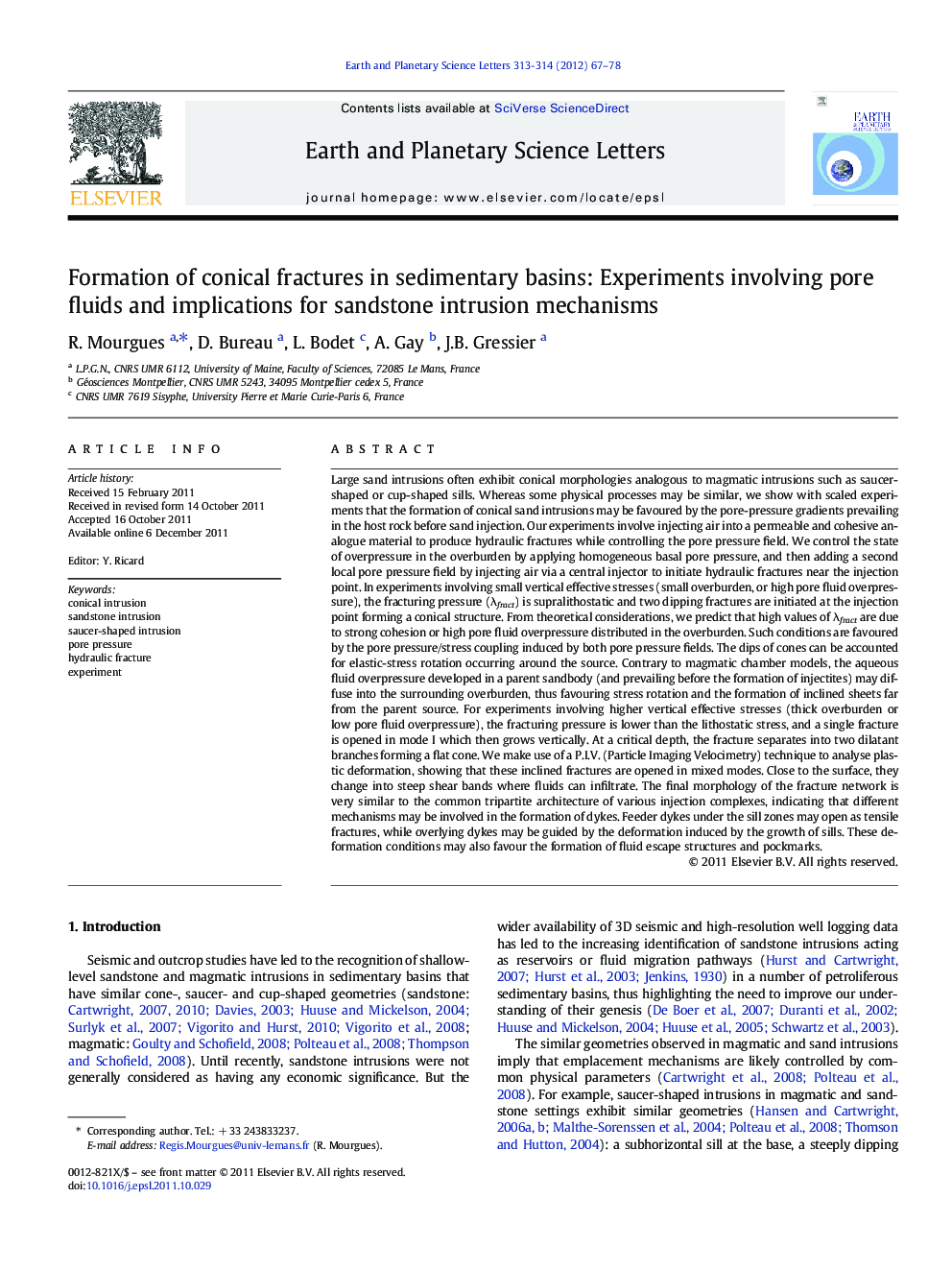| کد مقاله | کد نشریه | سال انتشار | مقاله انگلیسی | نسخه تمام متن |
|---|---|---|---|---|
| 4677668 | 1634814 | 2012 | 12 صفحه PDF | دانلود رایگان |

Large sand intrusions often exhibit conical morphologies analogous to magmatic intrusions such as saucer-shaped or cup-shaped sills. Whereas some physical processes may be similar, we show with scaled experiments that the formation of conical sand intrusions may be favoured by the pore-pressure gradients prevailing in the host rock before sand injection. Our experiments involve injecting air into a permeable and cohesive analogue material to produce hydraulic fractures while controlling the pore pressure field. We control the state of overpressure in the overburden by applying homogeneous basal pore pressure, and then adding a second local pore pressure field by injecting air via a central injector to initiate hydraulic fractures near the injection point. In experiments involving small vertical effective stresses (small overburden, or high pore fluid overpressure), the fracturing pressure (λfract) is supralithostatic and two dipping fractures are initiated at the injection point forming a conical structure. From theoretical considerations, we predict that high values of λfract are due to strong cohesion or high pore fluid overpressure distributed in the overburden. Such conditions are favoured by the pore pressure/stress coupling induced by both pore pressure fields. The dips of cones can be accounted for elastic-stress rotation occurring around the source. Contrary to magmatic chamber models, the aqueous fluid overpressure developed in a parent sandbody (and prevailing before the formation of injectites) may diffuse into the surrounding overburden, thus favouring stress rotation and the formation of inclined sheets far from the parent source. For experiments involving higher vertical effective stresses (thick overburden or low pore fluid overpressure), the fracturing pressure is lower than the lithostatic stress, and a single fracture is opened in mode I which then grows vertically. At a critical depth, the fracture separates into two dilatant branches forming a flat cone. We make use of a P.I.V. (Particle Imaging Velocimetry) technique to analyse plastic deformation, showing that these inclined fractures are opened in mixed modes. Close to the surface, they change into steep shear bands where fluids can infiltrate. The final morphology of the fracture network is very similar to the common tripartite architecture of various injection complexes, indicating that different mechanisms may be involved in the formation of dykes. Feeder dykes under the sill zones may open as tensile fractures, while overlying dykes may be guided by the deformation induced by the growth of sills. These deformation conditions may also favour the formation of fluid escape structures and pockmarks.
► We mechanically explain the tripartite architecture of sand intrusion complexes.
► We produce conical hydraulic fractures in experiments involving pore fluids.
► Fractures grow vertically until a critical depth where two dipping wings form.
► The inclined fractures open in mixed mode before transforming into fine shear bands.
► Shear bands induced by deformation of the cover provide pathways for steeper dykes.
Journal: Earth and Planetary Science Letters - Volumes 313–314, 1 January 2012, Pages 67–78